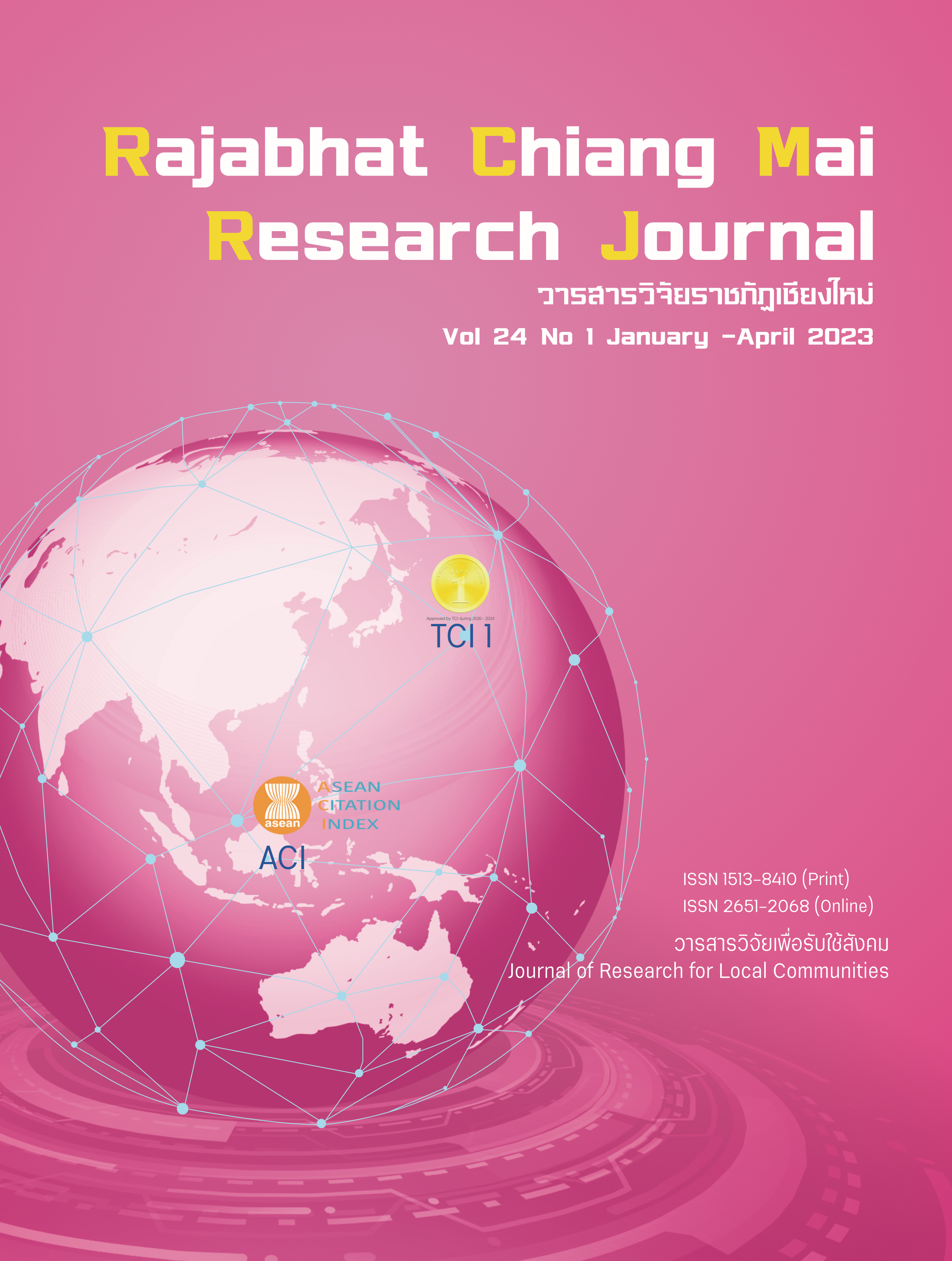Management Strategies for Ethnic Prototypes of Senior Clubs in the Upper Northern Region
DOI:
https://doi.org/10.57260/rcmrj.2023.261292Keywords:
Management strategies, Ethnic prototypes of senior clubsAbstract
The objectives of this article were 1) to explore the management strategies for senior clubs, and 2) to study the implementation of the management strategy of the ethnic senior clubs in the upper northern region. This research was mixed methods research. The target audience of the research was the elderly who were members of five ethnic senior clubs in the upper northern region. 30 of them were collected from each club; there were 150 people in total. The tools used to collect the data were documented files, observation forms, interview forms, and focus group forms. The data were analyzed based on content analysis and descriptions. The results demonstrated that:
1) The management strategies for ethnic prototypes of senior clubs in the upper northern region included 1) SWOT 2) vision 3) mission 4) objectives and 5) four strategies that involved committees, management, member participation, and activity management aspects.
2) Concerning, the implementation of the management strategies for ethnic prototypes of senior clubs in the upper northern region, it was found that the management strategies were implemented as planned. Activities were conducted as follows: six committee items, eleven management items, five member participation items, and five activity management items.
This research uncovered an important finding. Strategies and strategic plans for managing ethnic senior clubs in the upper northern region could be applied to senior clubs, as well as geriatric schools across the country. Emphasis should be placed on strategic planning for management, plan compliance, monitoring, following up, and continual improvement to ensure that senior clubs or schools were operated in a stable and sustainable environment for all time.
Downloads
References
Beall, J. (2007). Strategic Management of Private School: Recruitment, Compensation, Development and Retention of Teachers. Retrieved from http://proquest.umi.com/
Boonjang, P. (2014). Development of the operation model of the Elderly Club That Noi Subdistrict, Khueang Nai District, Ubon Ratchathani Province. Retrieved from http://tdc.thailis.or.th/tdc./basic.php. (In Thai)
David, F. R. (1997). Strategic Management. (6th ed.). New Jersey: Prentice-Hall, Inc.
Ministry of Social Development and Human Security. (2016). The elderly population of ASEAN. Social Statistics Document. Bangkok: Information and Communication Technology Center Ministry of Social Development and human stability. (In Thai)
National Board of the Elderly. (2010). National Plan for the Elderly, Vol. 2 (2002-2021), No. 1, 2009. Bangkok: Thepphenwanis. (In Thai)
Office of the National Economic and Social Development Board. (2013). Estimates Population of Thailand 2010-2040. Bangkok: October. (In Thai)
Office of the Promotion and Protection of the Rights of the Elderly. (2013). Manual for the Center for the Development of Quality of Life and the Elderly. Bangkok: Thepphenwanis. (In Thai)
Sachiyo. M. (2012). Lifelong learning patterns of people of many ages in the Lao Ling Home Descendants Center. Khon Kaen: Khon Kaen University. (In Thai)
Saritwanich. S. (2010). Strategic management: concepts and theories. (3rd ed.). Bangkok: Thammasat University. (In Thai)
Siripanich, B . (1999). Thai elderly people. Bangkok: Council of the Elders of Thailand. (In Thai)
Stanley, C. (2006). Strategic Planning A Practical Guide for Competitive Succeed. California: Thomson South West.
Thamdee. P. (2017). Identity Social Culture Conditions for Potential Aging of the Elderly in Chiang Mai. Social Science Journal Faculty of Political Science, Chulalongkorn University, 47(2), 109-131. http://www.library.polsci.chula.ac.th/journal2 (In Thai)
Yodpetch, S. (2012). Characteristics of operations and activities of the Elderly Club. Bangkok. J. (In Thai)
Downloads
Published
How to Cite
Issue
Section
License
Copyright (c) 2023 Rajabhat Chiang Mai Research Journal

This work is licensed under a Creative Commons Attribution-NonCommercial-NoDerivatives 4.0 International License.
1. Articles, information, content, images, etc published in the “Community and Social Development Journal” are copyrighted by the Community and Social Development Journal, Chiang Mai Rajabhat University. In order to properly distribute the articles through print and electronic media, the authors still hold the copyright for the published articles under the Creative Commons Attribution (CC BY) license, which allows the re-distribution of the articles in other sources. References must be made to the articles in the journal. The authors are responsible for requesting permission to reproduce copyrighted content from other sources.
2. The content of the articles appearing in the journal is the direct responsibility of the article authors. The editorial board of the journal does not necessarily agree with or share any responsibility.














